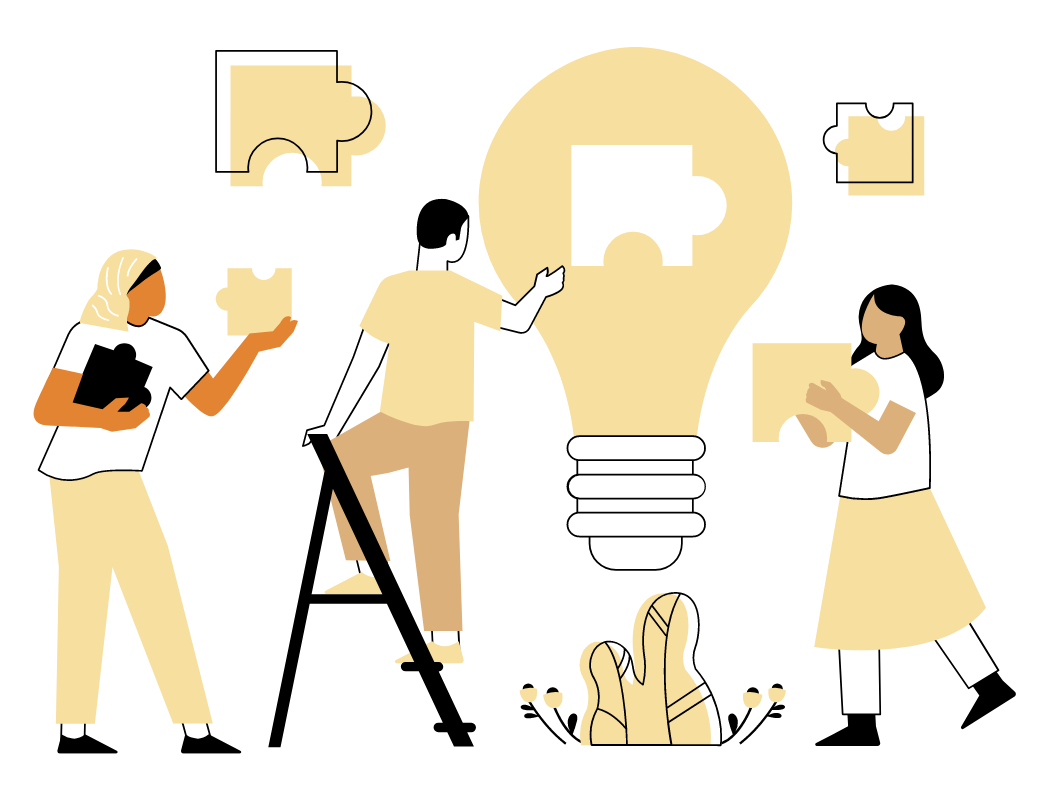THE LEARNING VOLT
Knowledge is power, but enthusiasm pulls the switch

HOW CAN WE HELP?

Custom eLearning
We design custom eLearning that your audience won’t forget and that your budget will love

Blended Learning
Combine face-to-face training with elearning to increase learner retention while saving time and money

Off-The-Shelf eLearning
Upload our pre-designed eLearning modules straight into your own Leaning Management System
WHY ELEARNING
Can your organisation afford not to join the trend?
Interactivity
Learners interact with simulations, quizzes, games, graphics, animations and videos, and flip, drag and drop items around the screen while learning. Instead of reading pages of text or sitting through a presentation, learners can be engaged in the material, which increases retention and engagement.
eLearning is scalable
You can roll it out to as many learners as you need, and it is a one-time investment that does not require repetition by a facilitator.
On Demand
Learners can access content anywhere, anytime and on demand. Today’s learners are engaged in short, mobile, self-paced, and customised content available at their fingertips as many times as they need without having to worry about attending a scheduled zoom or classroom session.
Full Quality Control
In face-to-face or zoom sessions, every instructor has their own method of delivering. Each varies in approach and style and is susceptible to mistakes. You can eliminate these issues with e-learning. Online learning provides consistent and standarised learning every time.
Save time & money
Factoring in loss of productivity, paying for an facilitator, travel time, time away from work to attend sessions and the cost of training materials like workbooks, it is easy to see how eLearning is more cost-effective compared to traditional training methods.
Learner retention and engagement
The many advantages of eLearning can be argued in a number of ways, but the main advantages simply boil down to two components: retention and engagement. Learners who are engaged and excited about the course material, who actually want to experience the concepts through gamification and interaction are more likely to retain the learning objectives
Sensory Engagment
eLearning engages a learner’s eyes, ears, and hands during a course, and enhances what could have been a lackluster experience. What’s more, simulations and skills uptake checks give users another chance to truly experience the training in a safe space before applying new skills on the job.
Continuous feedback
eLearning gives learners permission to explore, test and yes, even fail as part of the learning process. Continuous, in-the-moment feedback helps learners’ course-correct and become more proficient in the safest way possible, keeping the learning path moving forward in a positive way.

Interactivity
Learners interact with simulations, quizzes, games, graphics, animations and videos, and flip, drag and drop items around the screen while learning. Instead of reading pages of text or sitting through a presentation, learners can be engaged in the material, which increases retention and engagement.
Full Quality Control
In face-to-face or zoom sessions, every instructor has their own method of delivering. Each varies in approach and style and is susceptible to mistakes. You can eliminate these issues with e-learning. Online learning provides consistent and standarised learning every time.
Sensory Engagment
eLearning engages a learner’s eyes, ears, and hands during a course, and enhances what could have been a lackluster experience. What’s more, simulations and skills uptake checks give users another chance to truly experience the training in a safe space before applying new skills on the job.
eLearning is scalable
You can roll it out to as many learners as you need, and it is a one-time investment that does not require repetition by a facilitator.
Save time & money
Factoring in loss of productivity, paying for an facilitator, travel time, time away from work to attend sessions and the cost of training materials like workbooks, it is easy to see how eLearning is more cost-effective compared to traditional training methods.
Continuous feedback
eLearning gives learners permission to explore, test and yes, even fail as part of the learning process. Continuous, in-the-moment feedback helps learners’ course-correct and become more proficient in the safest way possible, keeping the learning path moving forward in a positive way.
On Demand
Learners can access content anywhere, anytime and on demand. Today’s learners are engaged in short, mobile, self-paced, and customised content available at their fingertips as many times as they need without having to worry about attending a scheduled zoom or classroom session.
Learner retention and engagement
The many advantages of eLearning can be argued in a number of ways, but the main advantages simply boil down to two components: retention and engagement. Learners who are engaged and excited about the course material, who actually want to experience the concepts through gamification and interaction are more likely to retain the learning objectives

LEVELS OF DIGITAL INTERACTIVITY
A narrative approach
Basic
Is essentially a ‘telling’ approach. The skill lies in the storytelling and the conciseness of the content explaining the concepts and facts. Using Self-assessment questions to evoke interest and check understanding.

Very nice
Procedural eLearning
Intermediate
Often used in systems training, requires demonstrations, graduated tasks and practice opportunities. The skill lies in breaking down the procedure into ‘how to’ bite-size logical steps. It usually requires animation or video to demonstrate the process.

So much fun
Experimental learning
Advanced
Is about taking the learner on a journey of discovery as decisions are made. Useful for developing judgement and changing behaviour, gamification falls into this category. The skill lies in molding the content from right/wrong to shades of grey. Also, the multimedia programming (animation) can be extensive.

Next level learning
MODERN LEARNER ANATOMY
Keen to learn
94% of employees would stay at a company if it invested in their career development yet only 15% can access learning related to their job.
Highly visual
Average learners only read 28% of the words on a web page. Web page views can jump up 48% when content contains photos and video.
Mobile learning is essential
Most people spend more time on their mobile phones then any other device, which is why our learning solutions are highly compatible with all smart devices.

Shrinking attention spam
Short, sharp bursts of just-in-time information that is delivered in a captivating and engaging way is what learners prefer. Think of the pre-emptive boredom when someone sends a 6 minute YouTube video.
On demand
Online learning is anytime learning which gives learners full control of when, where and how they choose to develop their skills
Expects frequent rewards
For people who grew up playing video games – Gen X,Y and Z – sustained attention requires intermittent rewards, in the same way a video gamer is rewarded with badges, level ups and so on.
THE DIGITAL LEARNING ERA
eLearning has features that cater to the modern learner preferences – hence its rise in popularity
If you’re not learning digitally these days you are left behind. Evidence shows learning and development has shifted in the way learning is delivered and consumed.
eLearning is often misunderstood as training that is simply delivered online. The spectrum of eLearning is so much more than a paper manual or classroom or virtual-delivered PowerPoint presentation.
Understanding the true scope of eLearning requires a closer look into how it works and how that translates into deeper learner engagement and retention of knowledge.

